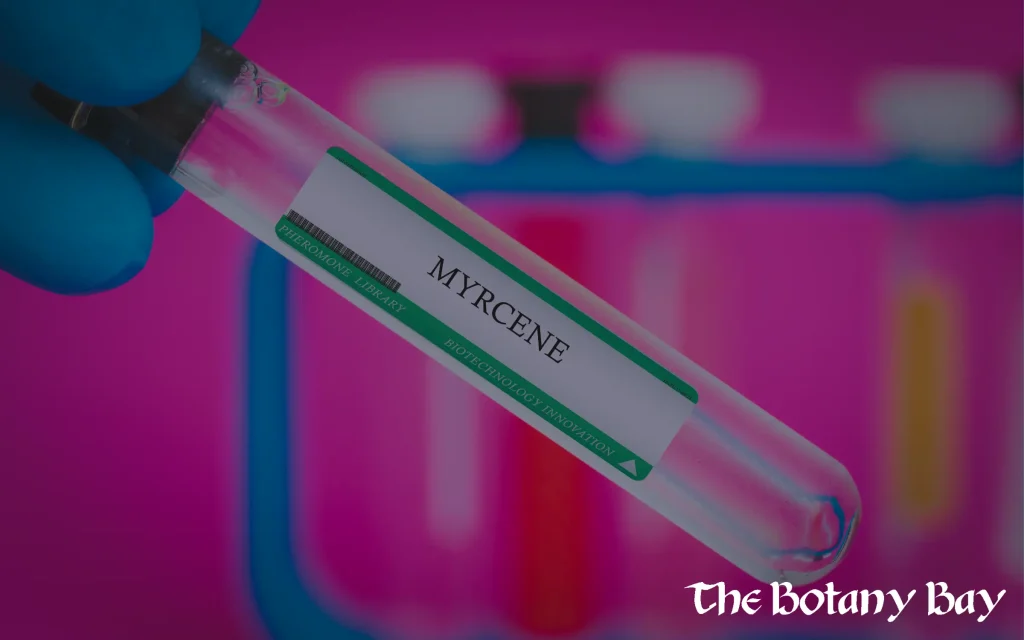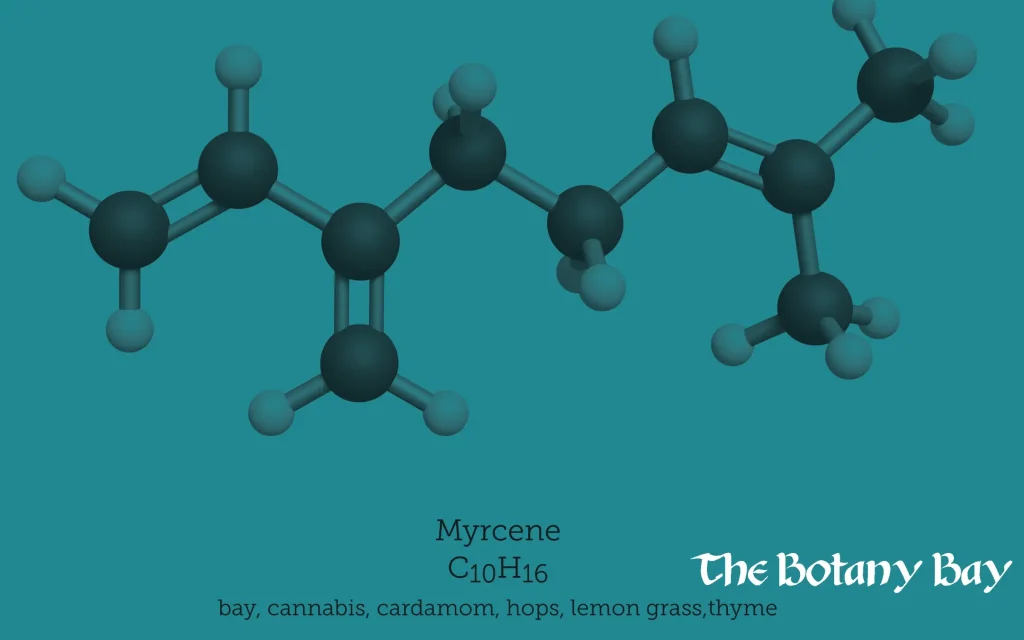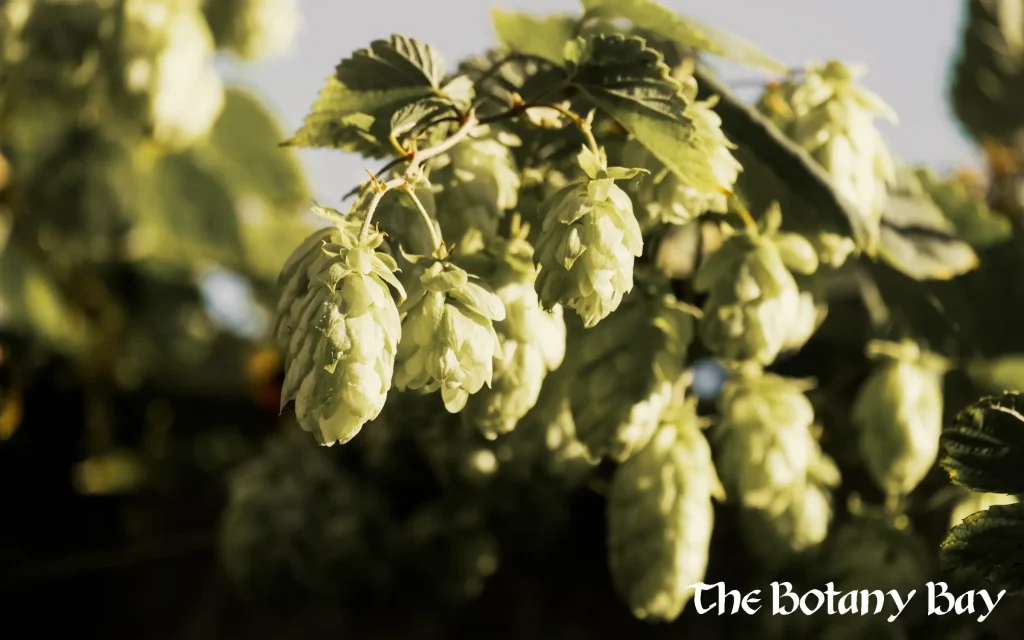Understanding Myrcene
Your Comprehensive Guide to Myrcene
At The Botany Bay, we want you to know more about the compounds that shape your experience with hemp, cannabis, and botanicals. Myrcene is one of the most common terpenes in cannabis and is also found in many herbs and fruits. Known for its earthy, musky, and slightly sweet aroma, myrcene is often associated with calming, relaxing effects and plays a key role in the entourage effect.

What Is Myrcene?
Myrcene is a monoterpene, a type of aromatic compound produced by many plants. In cannabis, it is often the most abundant terpene in indica-leaning strains, though it appears in sativas and hybrids too.
Outside of cannabis, myrcene is found in hops, lemongrass, mangoes, basil, and thyme. It contributes to the earthy, herbal scent in these plants and may influence their traditional uses.
It’s one of the most common terpenes in nature and is biosynthesized by plants as a defense mechanism — deterring pests and protecting against pathogens.
How Myrcene Works in the Body
While more research is needed, myrcene is believed to interact with the endocannabinoid system indirectly by influencing how cannabinoids bind to receptors. Some research and user reports suggest that myrcene may:
Contribute to muscle relaxation and a sense of calm
Affect the permeability of the blood-brain barrier, potentially enhancing the effects of cannabinoids
Influence sedation at higher concentrations
In cannabis, high-myrcene strains are often described as having a “couch-lock” effect, though this is anecdotal.
These reported effects are not FDA-approved and are based on early research and user reports.

Natural Sources of Myrcene
While myrcene is well known in cannabis and hemp, it is found in a wide range of plants, fruits, and herbs that people encounter every day. Some of the most notable sources include:
Mangoes — give off a tropical sweetness with an earthy undertone from myrcene
Lemongrass — a citrusy herb rich in myrcene, often used in teas and cooking
Hops — the plant that gives beer its distinct aroma, also a high-myrcene source
Thyme and basil — culinary herbs with earthy and slightly spicy aromas
Bay leaves — used in soups and sauces, contain myrcene’s herbal depth
Parsley — a fresh herb with subtle earthy notes
Guava — tropical fruit containing both fruity and herbal terpenes
The exact myrcene content varies based on growing conditions, plant variety, and freshness. For example, ripe mangoes often have more noticeable myrcene aroma than underripe ones, and freshly harvested herbs generally contain more than dried or processed versions.
If you’ve ever enjoyed a hoppy craft beer or the aroma of fresh mango, you’ve experienced myrcene outside of cannabis.
Myrcene in Hemp and Cannabis
Why it matters. Flip to learn more.
Often the most common terpene in cannabis, myrcene shapes the aroma, flavor, and possibly the overall feel of a strain. High levels are often linked with relaxing or sedating experiences.
More Than Cannabis
Where else is it found? – flip the box for more info.
Myrcene is in mangoes, lemongrass, hops, thyme, basil, and bay leaves. Mango lovers often mention eating them before cannabis use for a possibly enhanced experience, a popular anecdote, though not scientifically confirmed.
Legal Status of Myrcene
Myrcene is fully legal in the United States and most other countries. It is not intoxicating, and because it occurs naturally in many foods and herbs, it is generally recognized as safe when consumed in normal dietary amounts.

Reported Effects and Benefits of Myrcene
Users often associate myrcene with:
A calming or sedating effect in higher amounts
Earthy, herbal, and slightly sweet flavors
A role in enhancing cannabinoid effects through the entourage effect
Because it is widely present in foods and herbs, many people consume myrcene daily without even realizing it.
These effects are anecdotal and vary depending on individual tolerance, product formulation, and serving size.
How to Use Myrcene
You can experience myrcene in several ways:
✅ In Cannabis and Hemp Strains
Naturally present in the plant’s terpene profile.
✅ As an Isolated Terpene
Added to vape blends, tinctures, or aromatherapy products to modify aroma and potential effects.
✅ In Herbal Teas and Culinary Uses
Present in lemongrass tea, mangoes, and herbs like thyme and basil.
Always use food-grade, lab-tested terpenes for any product you plan to consume or inhale.
Testing and Transparency
At The Botany Bay, our terpene-containing products are:
Third-party tested for purity and identification
Sourced from natural plant extractions rather than synthetic chemistry whenever possible
Labeled with clear terpene content and intended use
Free from unnecessary fillers or harmful solvents
Compliance Disclaimer
This content is for educational purposes only and has not been evaluated by the Food and Drug Administration. Myrcene and terpene products are not intended to diagnose, treat, cure, or prevent any disease. Always consult a healthcare provider before using any botanical or terpene product, especially if pregnant, nursing, or taking medications.
FAQs About Myrcene
Is myrcene psychoactive?
Does myrcene make you sleepy?
What cannabis strains have high myrcene?
Can I get myrcene without cannabis?
NEWSLETTER
Sign up to our newsletter to keep updated with our latest offers and products.
© 2025 The Botany Bay All Rights Reserved
Disclaimer:
Some products sold by The Botany Bay are not scheduled under U.S. federal law but may be subject to state or local restrictions. The Botany Bay conducts due diligence and restricts orders to jurisdictions where these products are legal. Orders placed to prohibited areas will not be fulfilled. However, it remains the customer’s responsibility to ensure compliance with any applicable local, state, or international laws before purchasing. These products have not been evaluated by the FDA and are not intended to diagnose, treat, cure, or prevent any disease.
Kratom Disclaimer:
This product is not available for shipment to the following states: Alabama, Arkansas, Indiana, Louisiana, Rhode Island (until April 1, 2026), Vermont, and Wisconsin; or the following localities: Sarasota County (Florida); San Diego, Oceanside, Newport Beach, and unincorporated San Diego County (California); Alton, Jerseyville, Edwardsville, Glen Carbon, and Godfrey (Illinois); Denver, Monument, and Parker (Colorado); and Union, Alcorn, Lowndes, Monroe, and Tishomingo Counties, as well as the cities of Columbus, Oxford, Ridgeland, Corinth, Belmont, and Gluckstadt (Mississippi).
Cannabinoid Disclaimer:
This product is not available for shipment to states that restrict or ban hemp-derived cannabinoids, including Alaska, Arizona, Arkansas, Colorado, Delaware, Hawaii, Idaho, Iowa, Mississippi, Montana, Nevada, New York, North Dakota, Rhode Island, Utah, and Vermont; or to jurisdictions with specific local prohibitions on psychoactive hemp derivatives (e.g., Delta-8, THCA).
Disambiguation Disclaimer: The Botany Bay is not affiliated with Botany Farms.
- 0 Items
- View Cart
